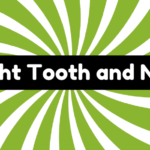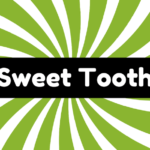The phrase "long in the tooth" refers to aging, originating from equine terminology where a horse's age is gauged by its teeth. First documented in Thackeray's 1852 novel, it reflects society's perception of obsolescence in both humans and technology. Commonly used in sentences like, "He is getting a bit long in the tooth to be playing professional football," this idiom highlights fading importance or relevance. While it indicates a natural process, it encourages a debate on the value of experience versus the need for modernization. Exploring this phrase further reveals significant cultural implications worth considering.
Synonyms
Aging, a natural process experienced by all, is often encapsulated in the phrase "long in the tooth." This expression is synonymous with terms such as "elderly," "aged," and "past one's prime." Other comparable phrases include "over the hill," which conveys a sense of being beyond a certain youthful peak, and "outdated," emphasizing the obsolescence of objects or ideas. Understanding these age-related phrases provides insight into societal perceptions of aging and their impact on individuals.
- "Past one's prime"
- "Over the hill"
- "Getting on in years"
- "No spring chicken"
While these idioms about aging serve a linguistic purpose, they can also reflect a society that often undervalues experience in favor of youth, raising questions of relevance and value as time progresses.
Example of Sentences
The term "long in the tooth" is often illustrated through various contexts, highlighting its versatility in describing age and obsolescence. This idiomatic expression elegantly captures the nuances of growing older and the inevitability of change within our lives and technology. Here are some examples:
- "He is getting a bit long in the tooth to be playing professional football."
- "This car is getting a little long in the tooth; time to contemplate a new one."
- "The coach is getting a bit long in the tooth for the physical demands of the game."
- "Some of the software in use is long in the tooth; time for an upgrade."
These sentences reflect linguistic evolution, emphasizing how language can express both the reality and critique of aging in various forms.
Origin
The phrase "long in the tooth" traces its roots to the equine world, where the age of a horse is determined by examining its teeth. In this historical context, equine terminology reveals that as horses age, their gums recede, making their teeth appear longer. This practice long predates modern exchanges, extensively shaping horse trading customs. The expression first appeared in William Makepeace Thackeray's 1852 novel, signifying an alteration from its animal-centric origins to a broader, more contemporary usage. Today, this phrase serves to denote aging or obsolescence in various domains, from technology to human capability. Such changes in meaning prompt us to reflect on the inevitable passage of time and the universal experience of aging.
Collocations
Building on its equine origins, the phrase "long in the tooth" has developed a range of collocations that enhance its expressive capacity. These phrase variations serve essential contextual applications, adding depth to discussions about age and obsolescence. Consider the following examples:
- "Long in the tooth for youthful enthusiasm"
- "Too long in the tooth for a career change"
- "Long in the tooth and still relevant"
- "A long in the tooth solution to modern problems"
Each collocation reflects societal attitudes toward aging, emphasizing not just the passage of time but also the nuanced interpretations of what it means to be considered old. As we utilize these expressions, we must critically assess how they shape our perceptions of both people and innovations facing the inevitable march of time.
How to Use in Everyday Language
While discussing age and obsolescence can be sensitive, incorporating the phrase "long in the tooth" into everyday language allows for a nuanced reflection on these themes. This expression can be particularly useful when addressing the concept of aging gracefully, whether in individuals or in contexts involving outdated technology. For example, one might comment on an older colleague still performing well but being "long in the tooth" for a dynamic role. Similarly, discussing an outdated smartphone as "long in the tooth" underscores the need for modernization. By using this phrase, we create a space for critical conversation about how we value experience and progress, reminding us that what was once state-of-the-art inevitably ages, compelling thoughtful consideration and innovation.
Why Is It Still Relevant Today?
Incorporating phrases like "long in the tooth" into everyday discourse fosters a meaningful dialogue about aging and obsolescence, making it relevant in contemporary discussions. Today, as society grapples with rapid change, this phrase resonates deeply. It encourages reflection on aging gracefully, not just in individuals but also concerning ideas and technology. As we face technological obsolescence, the phrase serves as a critique of outdated practices, urging innovation. Additionally, it highlights the reality that both people and processes can become less effective over time. This relevance is essential in an era that idolizes constant reinvention, reminding us to value wisdom while recognizing the need for transformation. Understanding this balance helps navigate life's complexities effectively.







